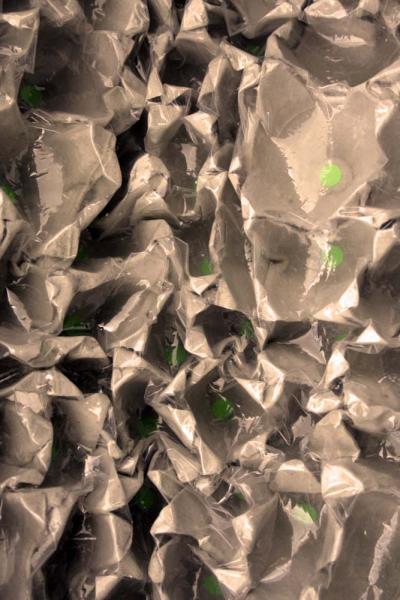
.jpg)
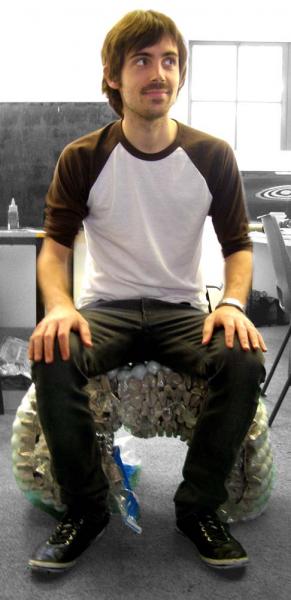
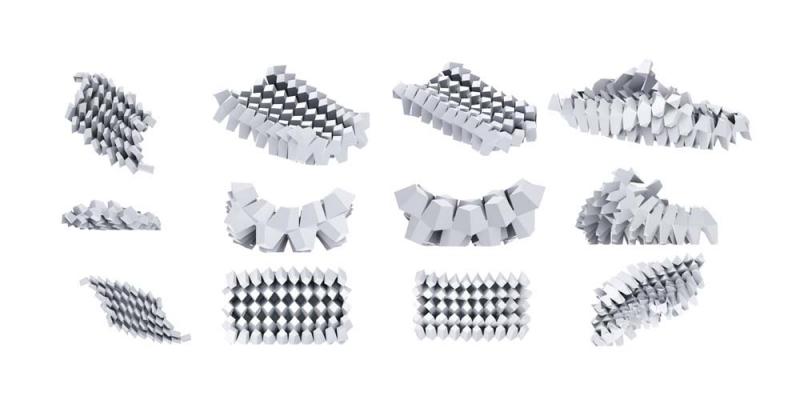
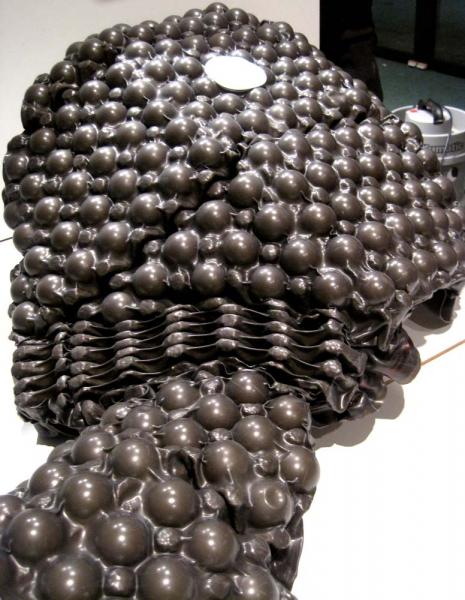
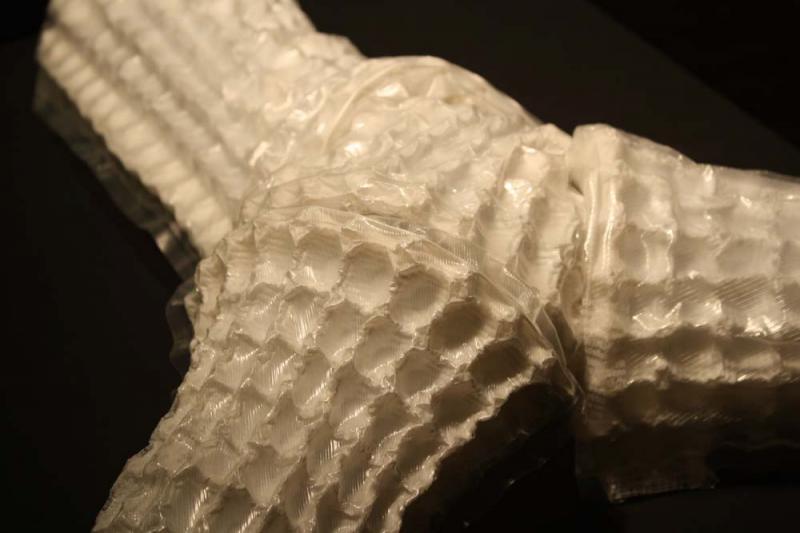
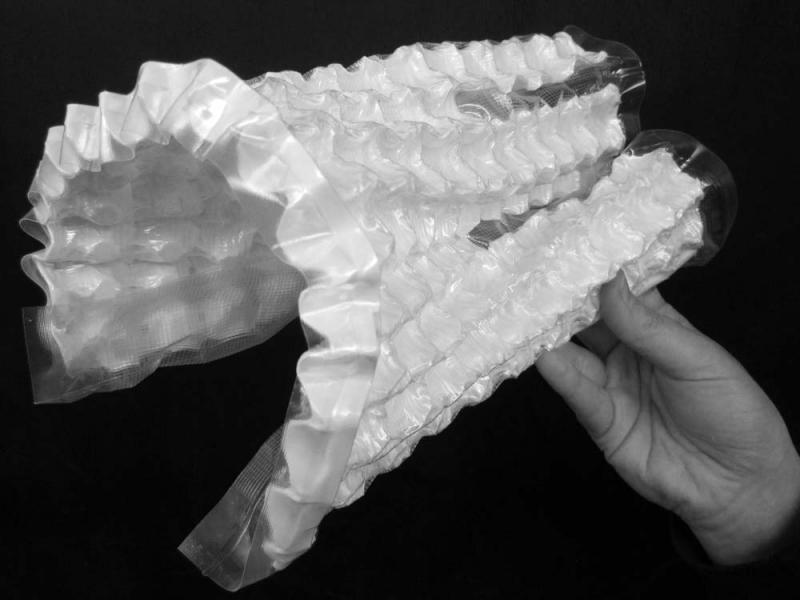
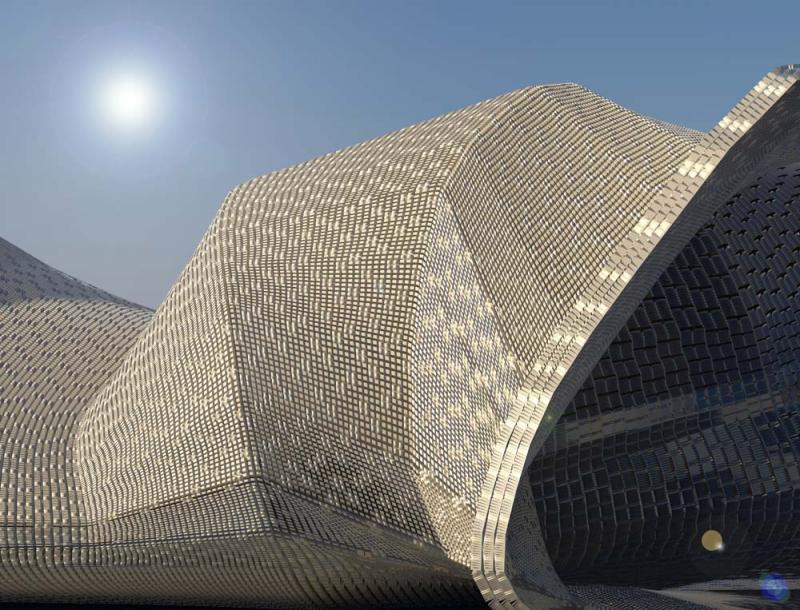
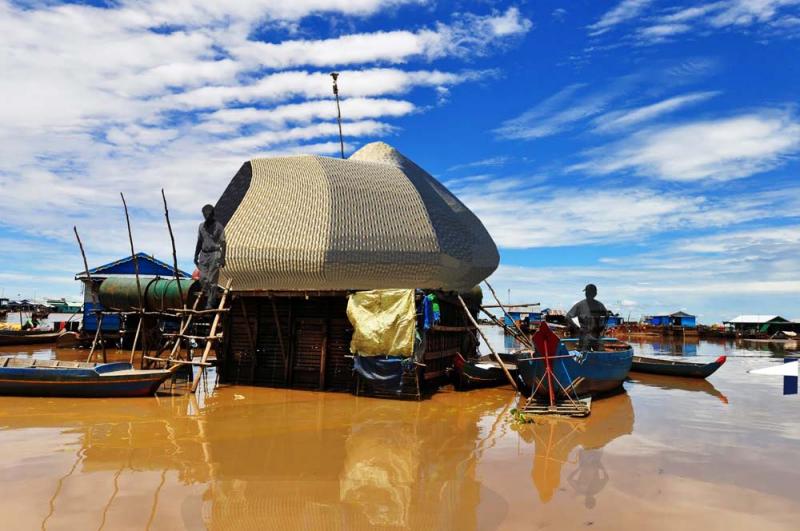
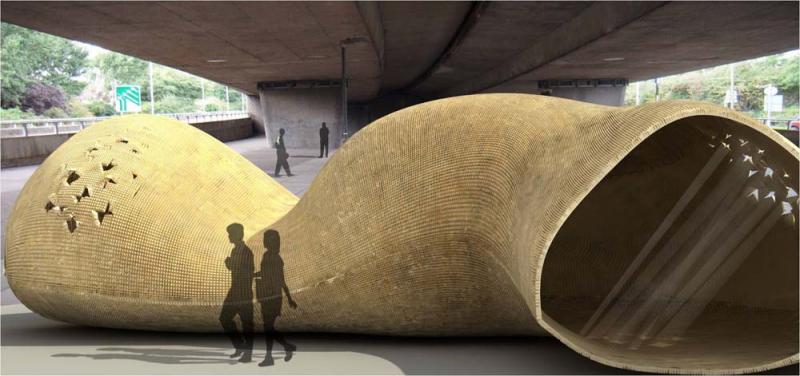
p [si∙neu]
Tutors: Marta Malé-Alemany & Daniel Piker & Jeroen Van Ameijde
Team: Federica Capodarte [ Italy ] Takbir Fatima [ India ]
Riddhi Parakh [ India ] Poonam Sardesai [ India ]
The application of negative air pressure to an aggregation of
discrete, non-structural elements in an air-tight membrane actuates
a system that develops many qualities it could not otherwise
exhibit: rigidity, structural performance and space creation. The
vacuum acts as an adhesive as well as a catalyst in the deflatable
system. The distribution logic of a geometrically defined, threedimensional
aggregate controls the resultant geometry.
A ‘pick and place’ machine, that can intelligently differentiate
between types of aggregate and distribute them in order to
achieve a desired result, will inform the fabrication system before
deployment. By varying the density, distribution and orientation
of aggregate to a high level of resolution, it is possible to achieve
varying levels of flexibility, structural performance and topology.
Prioritising these different aspects makes the system applicable to
different architectural scenarios such as impermanent solutions to
address the issues of temporary housing, as a formwork to be cast
upon, or as a large-span permanent structure. By varying external
constraints that regulate the form, the same low-energy system
can be deactivated by release of negative pressure and reassembled
in other contexts, resulting in variable form – becoming a
recyclable architecture.